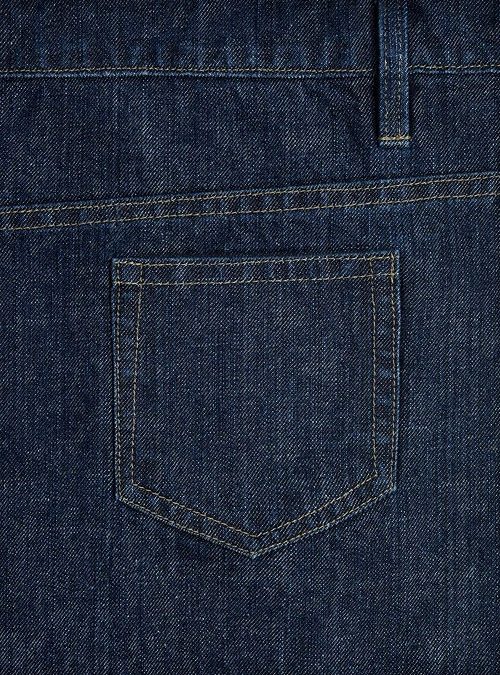Denim has become one of the world’s most popular textiles. It’s used to make everything from jeans and shorts to jackets, skirts and even dresses. As you may know, denim is a warp-faced textile consisting of cotton that features the weft going under two or more warp threads. The end result is a soft yet durable textile that outperforms many other textiles.
While all denim is soft and durable, its quality may vary. There’s high-quality denim, and there’s low-quality denim. When shopping for denim garments such as jeans, you might be wondering how to spot premium denim. Premium denim typically shares some common characteristics, including the following.
Deep Color
Premium denim has a deep color to it. It’s not faded, nor is it soft. When producing premium denim, manufacturers dye the raw cotton material to achieve a deep color. They’ll use an adequate amount of dye to achieve a deep color. In comparison, low-quality denim is oftentimes made with less dye, resulting in a faded or soft color.
You can find jeans and other denim garments in a variety of colors. Blue has become synonymous with denim. When shopping for denim garments, you’ll probably encounter light blue and dark blue colors. With that said, denim garments are available in dozens of other colors. Regardless of your preferred color, you should take a moment to inspect it. A deep color is a sign of premium, high-quality denim. A faded color, on the other hand, may indicate a lower-quality denim.
Selvedge
Selvedge denim is classified as a premium type of denim. Like all denim, it consists of cotton. Selvedge cotton, though, isn’t the same as regular denim. What is sevledge denim exactly, and why is it classified as a premium type of denim?
Selvedge denim is produced on an old-style shuttle loom. All denim requires a loom for production. While most manufacturers use a modern projectile shuttle loom to produce their denim, some of them use an old-style shuttle loom. Denim that’s made on an old-style shuttle loom is selvedge denim. It involves a back-and-forth weaving pattern, whereas modern projectile shuttle looms shoot cross threads through individually.
Jargon aside, selvedge denim features cleaner edges than other types of denim. If you’re looking to buy a pair of jeans, you may want to choose sevledge denim for this reason. Selvedge denim jeans have cleaner edges than regular jeans.
Non-Plastic Buttons
Another feature of premium denim is non-plastic buttons. Most denim garments have buttons. Jeans and denim shorts, for instance, typically have one or more buttons on the fly. Even denim jackets often have buttons on the front. You can distinguish between premium and low-quality denim by inspecting the material from which these buttons are made.
Low-quality denim often features plastic buttons. While inexpensive, plastic buttons are cheap. They are prone to cracking, and plastic buttons may fall apart when you wash and dry the garments to which they are attached. Fortunately, premium denim features different button materials. Rather than plastic, the buttons on premium denim garments are made of copper, tin, alloy, steel and other high-quality materials. When shopping for denim garments, you should check the buttons to determine what material they are made of. The button material can help you determine whether a garment is made of premium denim.

Uniform Stitching
Another common characteristic of premium denim is uniform stitching. All denim has stitching. Nonetheless, premium denim has cleaner, more uniform stitching than low-quality denim.
You can find stitching around the edges of a typical denim garment. When shopping for a denim garment, make sure it has clean, uniform stitching. If the stitching is frayed or unraveling, you may want to choose a different denim garment. Stitching imperfections such as this are a telltale sign of low-quality denim.
Rivets
You should look for rivets when shopping for denim garments. Not to be confused with buttons, rivets are permanent fasteners They are used in denim garments — along with other types of garments — to secure and reinforce the seams. Denim garments don’t rely entirely on threading to hold the seams together. Along with threading, they usually feature rivets.
Nearly all jeans have rivets. When inspecting a pair of jeans up close, you may notice rivets around the top of the pockets. They typically look like small buttons. Unlike regular buttons, though, you can fasten and unfasten rivets. Rivets are permanent fasteners, meaning they aren’t removable. You can distinguish premium denim from low-quality denim by looking at the rivets. Premium denim features durable, heavy-duty rivets. Low-quality denim, conversely, features cheaper and more fragile rivets.
Appropriate Weight
You should consider the weight of the denim. Some garments are made of heavier denim than others. You can find jeans made of 14 ounces or more of denim. With this heavyweight construction, they are typically strong and long-lasting.
Of course, other jeans are made of lighter denim. Some of them are made of 11 or 12 ounces of denim. Premium denim isn’t limited to a particular weight. Premium denim can differ in weight. Nonetheless, the weight of the denim can affect the garment’s properties. Garments made of more, heavier denim are typically warmer than their lighter counterparts. For the winter, you may want to choose a heavier denim. For the summer, you may want to stick with a lighter denim.
Custom Sizing
Premium denim garments are available in custom sizes. You aren’t limited to ordering them in a generic size. Stores that sell premium garments, such as MakeYourOwnJeans, typically offer them in custom sizes.
With custom sizing, you can rest assured knowing that a garment is made of premium denim. Custom-sized garments are made using your own measurements. If you order a pair of custom-sized jeans, for instance, you can specify your body measurements. As long as you enter the right measurements for your body, the jeans will fit perfectly. Premium denim garments are available in custom sizes such as this.











